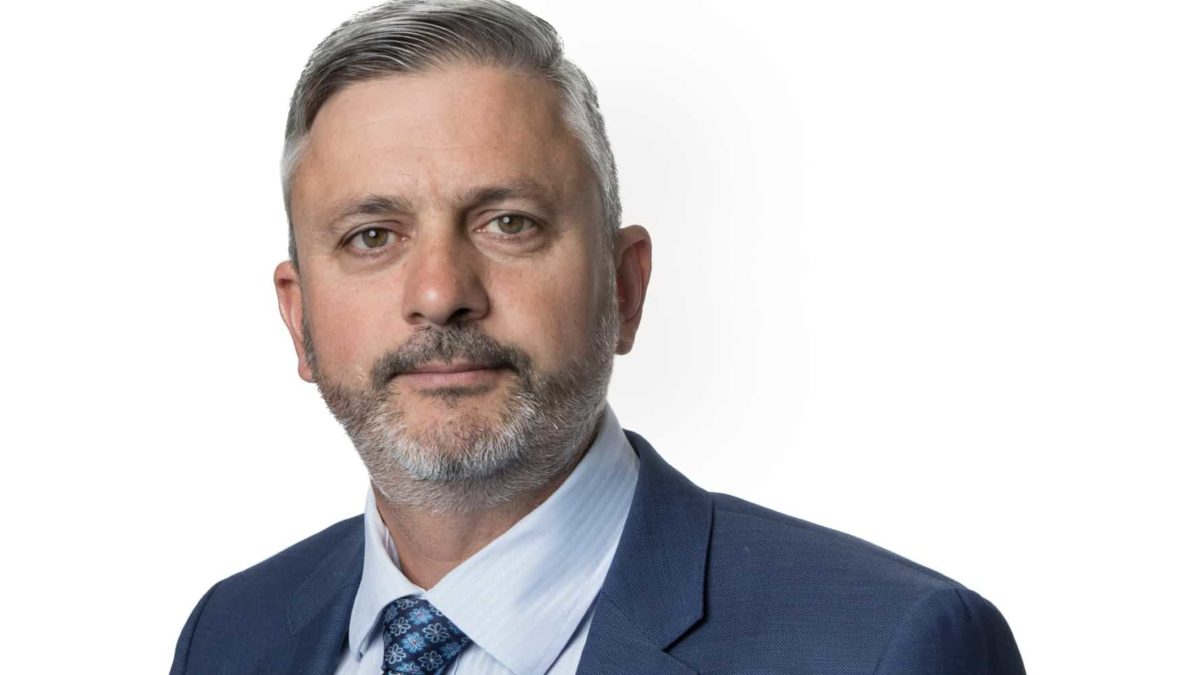Ask a Fund Manager
The Motley Fool chats with fund managers so that you can get an insight into how the professionals think. In Part 1 of this edition, Katana Asset Management's co-founder Romano Sala Tenna reveals 10 key criteria ASX shares must meet before investing in them.
Katana Asset Management snapshot
The Katana Australian Equity Fund (KAEF) invests in ASX shares from small-cap to large-cap, across the full range of sectors. The fund is actively managed and long-only.
Since its inception in December 2005, the fund has out-performed the All Ordinaries Index (ASX: XAO) by 7.23% per annum, net of fees.
Over the past 12 months, as of 30 April, the fund gained 43.90%. That compares to a gain of 33.89% posted by the ASX All Ordinaries Accumulation Index (ASX: XAOA), which includes reinvested dividends.
Now, on to Part One of The Motley Fool's interview with Katana Asset Management's co-founder, Romano Sala Tenna:
What boxes does an ASX share need to tick before your fund will consider investing in it? In other words, what triggers a buy signal?
There are 10 key criteria that every investment decision must be able to sign off on before it will make it into the portfolio. We have a total of 154 criteria, at last count, that we can optionally look at to assist in the process. Those additional criteria are more about making sure we haven't missed something.
Management
If we look at the 10 criteria in rough order of importance, the number 1 is management and organisational culture. That's the most difficult to assess because there's no objective quantitative measure. It really is just experience and the record you build up with companies over the years to understand where they sit.
Competitive advantage
Number 2, we look for a robust business model and sustainable competitive advantage… like what are the barriers to entry? Really, it's about understanding what gives this company an advantage above others. Again, this is very subjective and qualitative as opposed to quantitative.
You expect that to some degree, as share investing is part science and part art.
Earnings growth
Number 3 to look for is the PEG [price/earnings to growth] ratio.
We're looking for a low price to earnings growth ratio. PER [price to earnings ratio] gives you a starting point, but you really want to be looking at what your earnings growth is versus the price.
A share can be cheap, but it can have zero earnings growth. We don't mind paying for things that have a higher P/E. It might be a P/E of 20-times and earnings growth of 15% as opposed to, say, a P/E of 10-times and earnings growth of 0%.
We look at quality, value, fundamentals, and even a technical overlay as well. We're not just a value investor or a growth investor, or a momentum investor. We're style agnostic. And the PEG ratio does bring some of those components together.
The big picture
The 4th thing we look for is a positive macro-outlook with tailwinds. Big thematics that can drive the whole sector.
A good example is if you were invested in iron ore in 2005-06 as you saw the Chinese thematic emerging, then it didn't matter which iron ore share you were invested in. You made between 400% to 4,000%.
We're seeing the same thing right now, where the biggest thematic is the decarbonisation and electrification of the grid and transportation. We're past the tipping point on that, going mainstream on decarbonisation… For Australian investors, copper shares are a very solid way of playing the electrification thematic.
The right price
The 5th thing we look for is appropriate price action. Ideally, we want to resist the urge to purchase a stock until the price turns our way.
A great example right now we think is Origin [Origin Energy Ltd (ASX: ORG)]. ORG is a good buy. In terms of fundamentals, we think the LNG price… has a solid outlook. But investor sentiment is still very negative.
We're ready to take a position in Origin. Now we're waiting for the technicals to turn our way, for the general market to decide that this is a good investment as well. This may not occur for some time. For example, until the wholesale electricity price turns.
We've often seen cheap stocks becoming cheaper, and that's what we're seeing here again. We want that turn in sentiment as dictated by our technicals.
Strong balance sheet
The 6th thing we look for is a strong balance sheet. This indicates 2 things for us.
First, it gives us a strong insight into management's personality and the risks they're prepared to take. If they're being reckless with the balance sheet, then the assumption is they're not great custodians of the business on a more general level.
That's one of the more quantitative things we can look at to see how management views the business. Are they just trying for growth to maximise their own KPIs, or are they genuinely looking at how the business is being structured for the longer term?
The second thing the balance sheet tells us is around capital flexibility. If you have a strong balance sheet, you've got options for M&A, you've got options for organic growth, you've got options for increasing dividends or paying specials, and you've got options for capital management along the lines of buybacks and other returns.
Earnings quality
The 7th thing we look for before taking a position in a company is quality of earnings.
We're looking for consistency and certainty of earnings. We're looking for client concentration, a large number of small clients, not a small number of large clients. We're looking at what percentage of earnings are recurring. And we're looking at whether the determinants are inside or outside of management control.
The iron ore price is a great example. It doesn't matter how good the management of FMG [Fortescue Metals Group Ltd (ASX: FMG)] are, the major determinant on their share price will be the iron ore price.
Don't get me wrong, we're in FMG for a trade at the moment. But ideally, we want shares which have that structural growth element to them.
Free cash flow
Number 8, we look for higher operating cash flow and a high free cash flow.
Ideally, we're looking for free cash flow – once you've taken out all your sustaining capex and all the things management say are one-offs and non-recurring but tend to not be one-offs and tend to be recurring.
Return on equity… and gearing levels
We then [at number 9] look for return on equity, or ROE, and also return on assets.
In this market with record low interest rates… you might have a 2-3% return on the assets, but if you gear up 300-400%, you get a return of 7-8% on your equity.
You really need to understand your actual return on the underlying assets and whether it's leverage that's giving you that return at a more modest level.
Liquidity
Finally, the 10th most important thing we look for in every investment we have in the portfolio is liquidity. We absolutely respect liquidity and size in terms of what that brings to the table.
It's not to say we won't invest in smaller companies, we certainly do. But we need a much higher safety buffer; we need a much higher potential return on capital. We'll take smaller position sizes, and then we generally average up as opposed to average down.
Whereas we might buy the banks for a 10-15% return, for a small-cap company, it would have to be something like a 50-75% return minimum for us to be engaged in doing the hard work. These shares are like lobster pots. They're very easy to get into and very hard to get out of.
You invest in promising ASX shares without constraint on size. Is there a minimum market cap you won't go below?
In theory, 'no'.
One of the things we're very focused on is removing what we term as artificial constraints. Artificial constraints are things that are put in place simply so we can tick a box, and people will feel happy about our portfolio.
But we might have the best company in the world that comes to market with a $35 million market cap. We can do an enormous amount of work on it, meet management numerous times and think this is a fantastic business that can grow for the next 10 years. But, if you put in place an arbitrary market capitalisation, you could get filtered out early in the process.
So, the reality is there's no minimum limit. But it is very rare for us to invest in a company that has a market capitalisation of less than $150 million. It does happen, but it is a rarity.
How important are dividends in your investment decision?
Dividends come under our third most important investment criteria, the low PEG ratio. That criteria also reads a low PE [price to earnings] with a high sustainable dividend yield.
Really you can go down 2 paths.
You can go down the growth path, which is where you have a business that's growing at a good clip, and it has good return on investor capital. In that case, you don't want it paying out dividends. You want them to reinvest that money because it will compound more rapidly over time.
The flip side is that if we see something we believe has a very much above average sustainable dividend yield, say 7-9%, and preferably a little scope for growth, and we have a high level of comfort with that, then that may present an opportunity for us.
But I think more people have lost money on value traps than any other form of investing. There's often a reason why companies have a high dividend yield. They're either ex-growth or trying to con investors into taking a position.
There comes a point where the dividend level is too high, and rather than being attractive, it acts as a red flag.
But you can do really well buying companies with good dividend yields and perhaps a little growth to come. Remember, 4.5% of the 10.8% that shares have returned per annum [accumulated] since records began are the result of dividends.
Tomorrow in Part 2 of our interview, Romano reveals 4 shares every ASX investor should consider adding to their portfolio.









